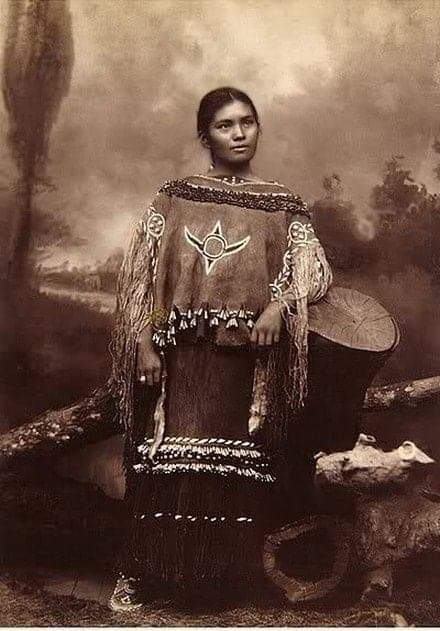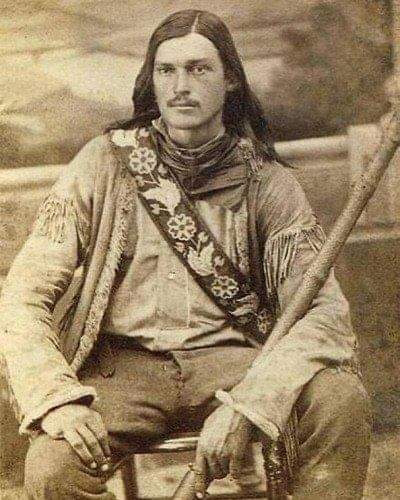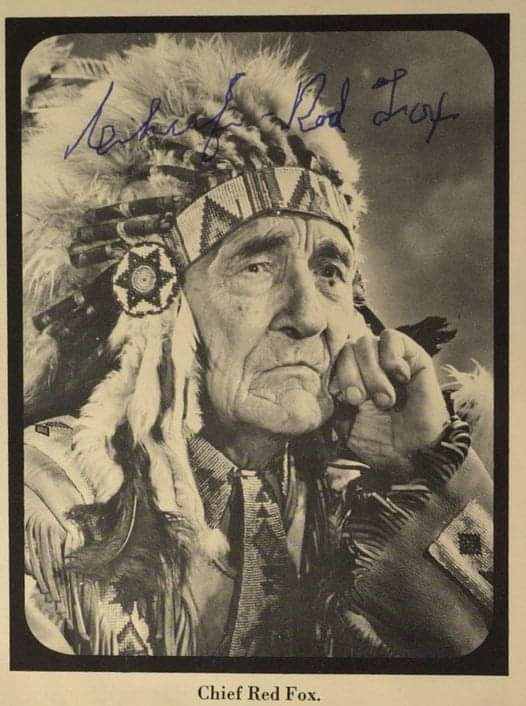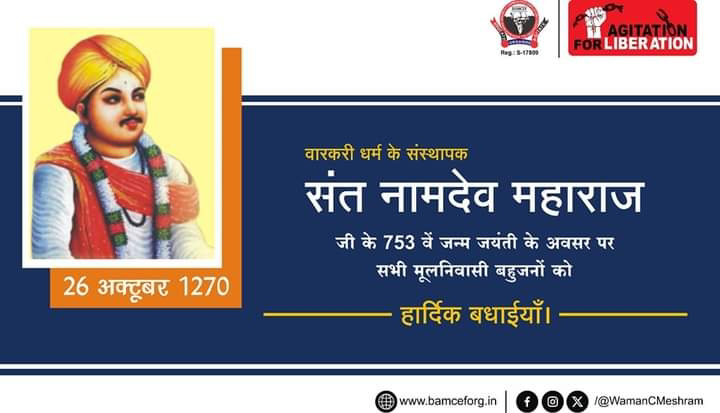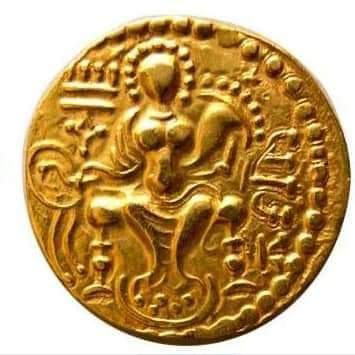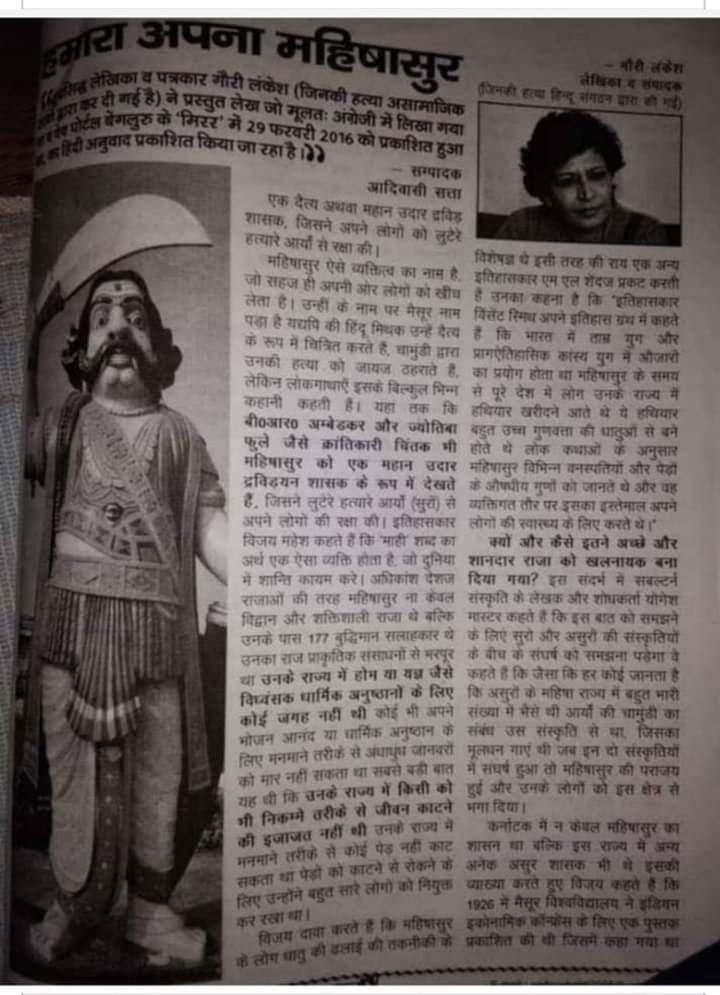Monday, November 20, 2023
Sunday, November 19, 2023
Elsie Vance Chestuen was brought into the world in 1873, her Indian name was Chestuen. Her mom was Dilth-cley-ih, little girl of the Apache Boss Bidu-ya, Beduiat known as Victorio.
Saturday, November 18, 2023
Picture of Luther Sage (Yellowstone) Kelly taken 1870s when he was in his mid 20s.
Friday, November 17, 2023
Bull Boss, brought into the world in 1825, Passed on February fourth 1914, was essential for the Crow, or Apsaroke tribe
Thursday, November 16, 2023
(Conceived 1863-Kicked the bucket December 18, 1923)a.k.a. George Jackson and Bison Twilight,
Wednesday, November 15, 2023
GRAHAM GREENE - Conceived June 22, 1952, on the Six Countries Hold in Ohsweken, Ontario, Mr. Greene is a 68-year-old FIRST Countries Canadian entertainer who has a place with the ONEIDA clan. He has dealt with stage,
Tuesday, November 14, 2023
Clash of Minimal Huge Horn, Journals of Boss Red Fox (1870-1976) ."I was six years and fourteen days old at the hour of the Custer battle.
Monday, November 13, 2023
Matȟó Wanáȟtake, called Kicking Bear, was brought into the world in an Oglala Lakota people group close to Pine Edge,
In the first century, the Kushan king Shrestha Vim Kadphisse
Sunday, November 12, 2023
Yankton (Sioux) Boss (1804 - 1888)Struck by the Ree, who might turn into a main head of the Yankton Sioux, was brought into the world in August 1804,
Saturday, November 11, 2023
During the American Nationwide conflict, Virginia occupant William Terrill Bradby was one of an expected 20,000 Local Americans who presented with Association military powers in the battle against the Alliance.
Friday, November 10, 2023
In the 1890's, the American ethnographer James Mooney went to the place that is known for the Comanches to acquire a comprehension of the Comanche Peyote Function
Thursday, November 9, 2023
Wanada Parker Page (1882-1970)She was brought into the world in 1882 in Indian Domain.
Wednesday, November 8, 2023
Everyone has knowledge about the Vedic period, for that Vedas, Puranas etc.
Everyone has knowledge about the Vedic period, for that Vedas, Puranas etc. are present. Just talking about them hurts the faith. Along with the history, the geography of the history also becomes underground.🥴
When the ruler of Iran, Aryaputra Darius I (532-486 BC) captured Punjab, some of his feudal lords and employees also settled in Punjab for administration. The first colony of Aryans settled in Punjab, India at this time.
Even during the Maurya period, the Aryans remained parallel employees. The Maurya kings kept Iranian employees in their service. Emperor Ashoka made an Iranian feudal lord Tushasp the ruler of Kathiawar.
Similarly, gradually Arya Samanta and the employees became stronger. Within the Maurya dynasty, these people started working to strengthen themselves during the rule of different kings. Because the Maurya dynasty were egalitarian people who believed in Buddhism, they were banned from practicing hypocrisy and sacrifice since the time of Emperor Ashoka. Due to which these people started facing problems.
Along with strength, the Iranian people were now looking for a king who would obey them and not interfere with their working style. And due to this, such an opportunity comes during the time of the last king of the Maurya dynasty, then the Iranian commander Pushyamitra Sunga killed the Maurya emperor Brihadratha and usurped his throne.
Then Pushyamitra became a king from a commander and established the Aryan Empire in India. The Gupta kings strengthened the Aryan Empire. Later, various dynasties converted Buddhist monasteries into temples on a large scale and killed the Buddhist monks and nuns there. Made them Devadasis, this is the story of arrival of Aryans in India.
Now let's look at it scientifically.
In modern DNA study, the presence of haplogroup R1a1 (Aryan racial) in genes decreases from northwest to south. Even today, Kalash/Kafir tribe resides in northwest Pakistan, whose language is close to Sanskrit and the method of worship is of Vedic religion. It is close, Indra is the main deity and despite being a tribe, they are as fair as any European.
The behavior of the languages of the Aryan family decreases from north-west to south.
Third, cultural: At many places in the Rigveda, there is an incident of conflict with people other than the Vedic people, who were completely different from the Vedic people in terms of physical appearance and complexion.
Even today, there is a lot of difference in the family deity, house deity and ancient religious behavior of the upper castes, especially the Brahmins, and the non-varna people. The main deity/house deity, gotra etc. of the non-varna people are not related to Aryan speaking words.
A cultural supremacy is visible.
Vedic deities are not present in our folk practice but are local village and household deities. The practices of Aryan religion seem to have been adopted in a missionary manner. Therefore, the Aryan Migration Theory appears to be true. It is not a matter of a fight with a king in one day, but not a gap of 250 years in the form of cultural dominance, but it took at least a thousand years for the migration from Afghanistan to India. It was a huge cultural amalgamation.
𝐁𝐚𝐭𝐭𝐥𝐞 𝐨𝐟 𝐋𝐢𝐭𝐭𝐥𝐞 𝐁𝐢𝐠 𝐇𝐨𝐫𝐧, 𝐌𝐞𝐦𝐨𝐢𝐫𝐬 𝐨𝐟 𝐂𝐡𝐢𝐞𝐟 𝐑𝐞𝐝 𝐅𝐨𝐱 (𝟏𝟖𝟕𝟎-𝟏𝟗𝟕𝟔)
Tuesday, November 7, 2023
Boss SATANTA (1820 - 1878)Set'tainte (or White Bear) was one of the most mind-blowing known, and last, of the Kiowa War Bosses.
Boss SEATTLE (c. 1786 - June 7, 1866)He was a Suquamish and Duwamish boss.
Monday, November 6, 2023
𝐂𝐡𝐢𝐞𝐟 𝐋𝐨𝐨𝐤𝐢𝐧𝐠 𝐆𝐥𝐚𝐬𝐬 (𝟏𝟖𝟑𝟐-𝟏𝟖𝟕𝟕)Local American Boss.
Sunday, November 5, 2023
Head Running BunnyAatsista-Mahkan or Running Bunny (c. 1833 - likely 24 January 1911) was a head of the Siksika First Country
Saturday, November 4, 2023
Strolling Bison (George McLean) age 92, close to Morley,
Friday, November 3, 2023
"Sioux Boss Long Wolf and Family", ca. 1880.~ "An Outsider Hears Last Wish of a Sioux Boss
Thursday, November 2, 2023
MONTANA BLACKFEET, 1938.
From the Clash of Minimal Large Horn"I had sung the conflict tune, I had smelt power smoke, my heart was awful - I resembled one who has no brain
Wednesday, November 1, 2023
Seneca lady Ah-Weh-Eyu (Lovely Blossom), 1908.The Seneca are a gathering of Native Iroquoian-talking
Tuesday, October 31, 2023
You will see looks at casteism all over...
Unbeknownst to the brahmins, their varma, empty brahmins do Chahadi."
Monday, October 30, 2023
The antiquated coins were tracked down in Northwest China's Shaanxi area.
These Jambudip are gold coins of Gupta time of India. These coins are written in Dhamma script.
Sunday, October 29, 2023
The show occurring in Hunan has featured the craft of antiquated Buddhist models.
Saturday, October 28, 2023
Today, while turning the pages of history, we will discuss Gauhar Jaan
Maharaja Jai Singh Ji Naruka of Alwar,
Excerpt from a letter written to A. Mayer, April 30, 1867
Thursday, October 26, 2023
Gauri Lankesh originally wrote this report which was published in the web portal Bangalore Mirror on February 29, 2016.
Gauri Lankesh originally wrote this report which was published in the web portal Bangalore Mirror on February 29, 2016.
A Daitya or a great benevolent Dravidian ruler, who protected his people from the marauding-killing Aryans.
Mahishasur is the name of such a personality, who easily attracts people towards himself. Mysore is named after him. Although Hindu myths portray him as a demon, justifying his killing by Chamundi, folklore tells a completely different story. Even B. R. Revolutionary thinkers like Ambedkar and Jyoti Rao Phule also see Mahishasura as a great benevolent Dravidian ruler who protected his people from the marauding-killing Aryans (Suras).
Historian Vijay Mahesh says that the word ‘Mahi’ means a person who ‘establishes peace in the world’. Like the kings of most countries, Mahishasura was not only a learned and powerful king, but he also had 177 wise advisors. His kingdom was rich in natural resources. There was no place for destructive religious rituals like Homa or Yagya in his kingdom. No one could arbitrarily kill animals indiscriminately for food, pleasure or religious ritual. The biggest thing was that in his kingdom no one was allowed to live a useless life. No tree could be cut arbitrarily in his kingdom. He had appointed a lot of people to stop the trees from being cut.
Vijay claims that the people of Mahishasura were experts in metal casting techniques.
Similar opinion was expressed by another historian M.L. Shendaj reveals, she says that “Historian Vincent A. Smith says in his history book that tools were used in India during the Copper Age and in the historical Bronze Age. During the time of Mahishasura, people from all over the country used to come to his kingdom to buy weapons. These weapons were made of very high quality metals. According to folklore, Mahishasura knew the medicinal properties of various plants and trees and he personally used them for the health of his people.
Why and how was such a good and illustrious king turned into a villain? In this context, writer and researcher of subaltern culture Yogesh Master says that “to understand this, one has to understand the conflict between the cultures of Suras and Asuras”. He says that “As everyone knows that the Asuras had a very large number of buffaloes in the kingdom of Mahisha. Chamundi of the Aryans belonged to the culture whose basic wealth was cows. When these two cultures clashed, Mahishasura was defeated and his people were driven away from the region”.
Karnataka was not only ruled by Mahishasura, but there were many other Asura rulers in this state. Explaining this, Vijay says that “In 1926, the University of Mysore published a booklet for the Indian Economic Conference, in which it was said that there were many strongholds of the Asura chieftains in the state of Karnataka. For example, Guhasur ruled from his capital Harihar. Hidimbasura ruled over Chitradurga and its surrounding areas. Bakasura was the king of Ramanagara. Everyone knows that Mahishasura was the king of Mysore. All these facts show that before the arrival of the Aryans, this beyond area was ruled by the indigenous Asuras. The Aryans captured their kingdom”.
Ambedkar has also strongly refuted the portrayal in Brahmanical myths that Asuras were demons. Baba Saheb Ambedkar emphasizes in one of his essays that “It is completely wrong to portray the demons in Mahabharata and Ramayana in such a way that they were not members of human society. “Asuras were members of human society”.
Ambedkar ridicules the Brahmins for presenting their gods as a bunch of pathetic cowards. They say that all the Hindu myths tell us that the demons were not killed by Vishnu or Shiva, but by the goddesses. If Durga (or Chamundi in Karnataka context) killed Mahishasura, Kali killed Narakasura. Whereas the demon brothers Shumbha and Nishumba were killed at the hands of Durga. Vanasura was killed by Kanyakumari. Another demon Raktabeej was killed by Goddess Shakti. Dr. Ambedkar says with disdain that “It seems that God could not protect himself from the hands of demons, so he sent his wives to save himself”.
After all, what was the reason that the Suras (gods) always sent their women to kill the Asura kings. Explaining the reasons for this, Vijay explains that “The gods knew very well that the demon king would never take up his weapons against women. Most of these women have murdered the demon kings in a fraudulent manner. To hide their shame, the story of these killer wives of Gods having ten hands, amazing weapons etc. was created.
Moving away from these stories, which are good for drama but seem impossible, we can see the truth of how the Brahminist class distorted the history of the indigenous people. Their aim in distorting history in this way was to fulfill their selfish interests.
Not only in Bengal or Jharkhand, but there are some communities living around Mysore too, who blame Chamundi for the murder of their great liberal king. Some of them pray for the soul of Mahishasura during Dussehra. As Srinivas, the chief priest of the Chamundeshwari temple, told me, “Some people from Tamil Nadu come twice a year and worship the idol of Mahishasura”.
For the last two years Asur has become an issue of anger in the entire country. If the tribal people of West Bengal are holding massive meetings to discuss Asur culture, festivals around the Asur theme are being organized on the campuses of various universities in the country. Last year, students of Osmania University and Kakatiya University had celebrated ‘Narkasur Day’.
Since the Mahishasur Utsav of JNU students was given such nationwide popularity by the (then) Human Resources Minister, I am not going into its details.
How to explain the increasing attraction of people towards Mahishasura and other demons? Should we get rid of it by just saying that a myth is not history, even folklore cannot be a document of our past. Vijay explains it accurately and says that “Manuwadis distorted the rich cultural history of Bahujans as per their wish. We will have to dust off this history, expose the mythological lies and tell the truth to our people and our children. This is the only path on which we can become claimants of our true history. The increasing attraction of people towards Mahishasura and other demons shows that this is what is actually happening.
Jai Native!!

